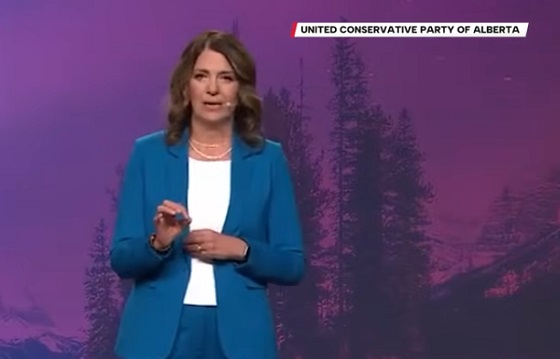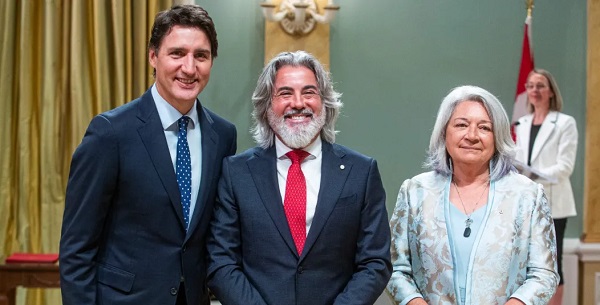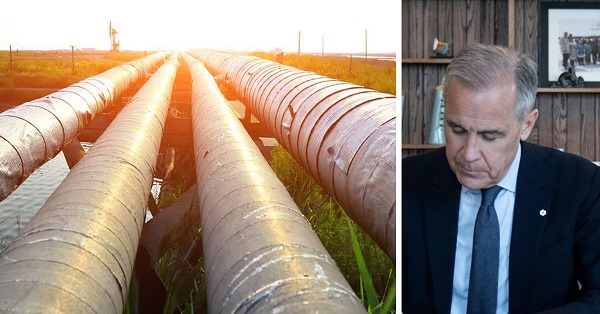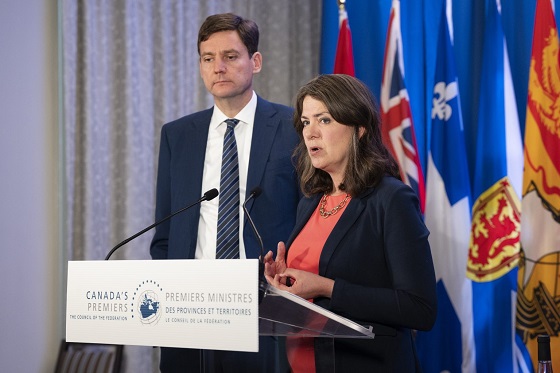Alberta
Advocacy group urges change to recall and citizen initiated referendum legislation

News release from Project Confederation
Project Confederation has been actively engaged in advocating for fair and inclusive democratic mechanisms for citizen participation in policy decisions.
In 2020, I presented arguments in favour of citizen initiated referenda and recall legislation to the Select Special Democratic Accountability Committee, emphasizing the significance of citizen-initiated referenda as a crucial aspect of democratic governance.
Bill 51, the Citizen Initiative Act, and Bill 52, the Recall Act, were passed into law in 2021.
While these bills were initially viewed as positive steps towards enhancing democracy in Alberta, it has become evident that they contain major flaws that hinder the effectiveness of recall and citizen initiative efforts.
To put it simply, the requirements are unattainable.
For instance, the requirement of collecting signatures from 40% of eligible voters for recall petitions for public officials, within a short 60-day period, posed an insurmountable challenge for the citizen who initiated a recall petition against Calgary Mayor Jyoti Gondek.
What’s the point of a recall process if the petitioner has to collect nearly three times the number of votes garnered by the official they seek to recall?
The provincial government is currently considering how to fix recall.
But, the rules for citizen initiated referenda are equally unattainable, so it’s important we act now to make sure the provincial government understands that referenda rules must get fixed at the same time.
Our friends at the Alberta Institute recently launched a petition calling on the Alberta government to fix both recall and citizen initiated referendums.
They propose the following key recommendations for reforming recall and citizen-initiated referenda legislation in Alberta:
Recall:
- Recall efforts permitted any time (they would take a minimum of 6 months anyway, while in the last 6 months there would just be no by-election)
- 20% of the number who actually voted last time must sign a petition for a Recall to be successful when there are more than 50,000 eligible voters
- 30% of the number who actually voted last time must sign a petition for a Recall to be successful when there are fewer than 50,000 eligible voters
- Signatures must be collected within a 180-day period
- A successful petition should remove municipal and provincial representatives automatically, triggering a by-election which the representative could run in, if they wish
Referenda:
- 10% of the number who actually voted last time must sign a petition for Legislative or Policy Referenda
- 20% of the number who actually voted last time must sign a petition for Constitutional Referenda
- Signatures must be collected within a 180-day period
These recommendations aim to make the recall and referenda processes more accessible and reflective of democratic principles, ensuring that citizens have a meaningful voice in shaping policy decisions.
The democratic process should be inclusive and responsive to the evolving needs and aspirations of the populace, and citizens must have the opportunity to address fundamental issues through democratic tools.
If you agree, and want to see the referendum and recall rules fixed, please sign the Alberta Institute’s petition:
Regards,
Josh Andrus
Executive Director
Project Confederation
Alberta
Keynote address of Premier Danielle Smith at 2025 UCP AGM

From the YouTube Channel of Rebel News
Alberta
Net Zero goal is a fundamental flaw in the Ottawa-Alberta MOU

From the Fraser Institute
By Jason Clemens and Elmira Aliakbari
The challenge of GHG emissions in 2050 is not in the industrial world but rather in the developing world, where there is still significant basic energy consumption using timber and biomass.
The new Memorandum of Understanding (MOU) between the federal and Alberta governments lays the groundwork for substantial energy projects and infrastructure development over the next two-and-a-half decades. It is by all accounts a step forward, though, there’s debate about how large and meaningful that step actually is. There is, however, a fundamental flaw in the foundation of the agreement: it’s commitment to net zero in Canada by 2050.
The first point of agreement in the MOU on the first page of text states: “Canada and Alberta remain committed to achieving net zero greenhouse gas emissions by 2050.” In practice, it’s incredibly difficult to offset emissions with tree planting or other projects that reduce “net” emissions, so the effect of committing to “net zero” by 2050 means that both governments agree that Canada should produce very close to zero actual greenhouse gas (GHG) emissions. Consider the massive changes in energy production, home heating, transportation and agriculture that would be needed to achieve this goal.
So, what’s wrong with Canada’s net zero 2050 and the larger United Nations’ global goal for the same?
Let’s first understand the global context of GHG reductions based on a recent study by internationally-recognized scholar Vaclav Smil. Two key insights from the study. First, despite trillions being spent plus international agreements and regulatory measures starting back in 1997 with the original Kyoto agreement, global fossil fuel consumption between then and 2023 increased by 55 per cent.
Second, fossil fuels as a share of total global energy declined from 86 per cent in 1997 to 82 per cent in 2022, again, despite trillions of dollars in spending plus regulatory requirements to force a transition away from fossil fuels to zero emission energies. The idea that globally we can achieve zero emissions over the next two-and-a-half decades is pure fantasy. Even if there is an historic technological breakthrough, it will take decades to actually transition to a new energy source(s).
Let’s now understand the Canada-specific context. A recent study examined all the measures introduced over the last decade as part of the national plan to reduce emissions to achieve net zero by 2050. The study concluded that significant economic costs would be imposed on Canadians by these measures: inflation-adjusted GDP would be 7 per cent lower, income per worker would be more than $8,000 lower and approximately 250,000 jobs would be lost. Moreover, these costs would not get Canada to net zero. The study concluded that only 70 per cent of the net zero emissions goal would be achieved despite these significant costs, which means even greater costs would be imposed on Canadians to fully achieve net zero.
It’s important to return to a global picture to fully understand why net zero makes no sense for Canada within a worldwide context. Using projections from the International Energy Agency (IEA) in its latest World Energy Outlook, the current expectation is that in 2050, advanced countries including Canada and the other G7 countries will represent less than 25 per cent of global emissions. The developing world, which includes China, India, the entirety of Africa and much of South America, is estimated to represent at least 70 per cent of global emissions in 2050.
Simply put, the challenge of GHG emissions in 2050 is not in the industrial world but rather in the developing world, where there is still significant basic energy consumption using timber and biomass. A globally-coordinated effort, which is really what the U.N. should be doing rather than fantasizing about net zero, would see industrial countries like Canada that are capable of increasing their energy production exporting more to these developing countries so that high-emitting energy sources are replaced by lower-emitting energy sources. This would actually reduce global GHGs while simultaneously stimulating economic growth.
Consider a recent study that calculated the implications of doubling natural gas production in Canada and exporting it to China to replace coal-fired power. The conclusion was that there would be a massive reduction in global GHGs equivalent to almost 90 per cent of Canada’s total annual emissions. In these types of substitution arrangements, the GHGs would increase in energy-producing countries like Canada but global GHGs would be reduced, which is the ultimate goal of not only the U.N. but also the Carney and Smith governments as per the MOU.
Finally, the agreement ignores a basic law of economics. The first lesson in the very first class of any economics program is that resources are limited. At any given point in time, we only have so much labour, raw materials, time, etc. In other words, when we choose to do one project, the real cost is foregoing the other projects that could have been undertaken. Economics is mostly about trying to understand how to maximize the use of limited resources.
The MOU requires massive, literally hundreds of billions of dollars to be used to create nuclear power, other zero-emitting power sources and transmission systems all in the name of being able to produce low or even zero-emitting oil and gas while also moving to towards net zero.
These resources cannot be used for other purposes and it’s impossible to imagine what alternative companies or industries would have been invested in. What we do know is that workers, entrepreneurs, businessowners and investors are not making these decisions. Rather, politicians and bureaucrats in Ottawa and Edmonton are making these decisions but they won’t pay any price if they’re wrong. Canadians pay the price. Just consider the financial fiasco unfolding now with Ottawa, Ontario and Quebec’s subsidies (i.e. corporate welfare) for electric vehicle batteries.
Understanding the fundamentally flawed commitment to Canadian net zero rather than understanding a larger global context of GHG emissions lays at the heart of the recent MOU and unfortunately for Canadians will continue to guide flawed and expensive policies. Until we get the net zero policies right, we’re going to continue to spend enormous resources on projects with limited returns, costing all Canadians.
-

 Daily Caller1 day ago
Daily Caller1 day agoJohn Kerry Lurches Back Onto Global Stage For One Final Gasp
-

 Food15 hours ago
Food15 hours agoCanada Still Serves Up Food Dyes The FDA Has Banned
-

 National1 day ago
National1 day agoEco-radical Canadian Cabinet minister resigns after oil deal approved
-

 Addictions15 hours ago
Addictions15 hours agoManitoba Is Doubling Down On A Failed Drug Policy
-

 Alberta15 hours ago
Alberta15 hours agoNet Zero goal is a fundamental flaw in the Ottawa-Alberta MOU
-

 Alberta10 hours ago
Alberta10 hours agoKeynote address of Premier Danielle Smith at 2025 UCP AGM
-

 COVID-1915 hours ago
COVID-1915 hours agoFDA says COVID shots ‘killed’ at least 10 children, promises new vaccine safeguards
-

 National2 days ago
National2 days agoAlleged Liberal vote-buying scandal lays bare election vulnerabilities Canada refuses to fix






